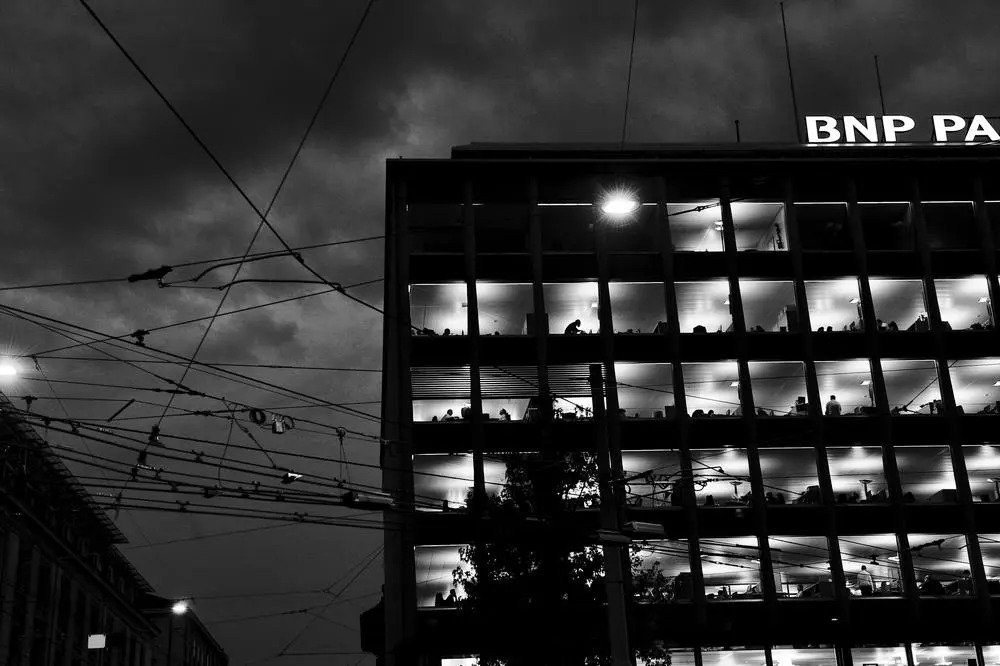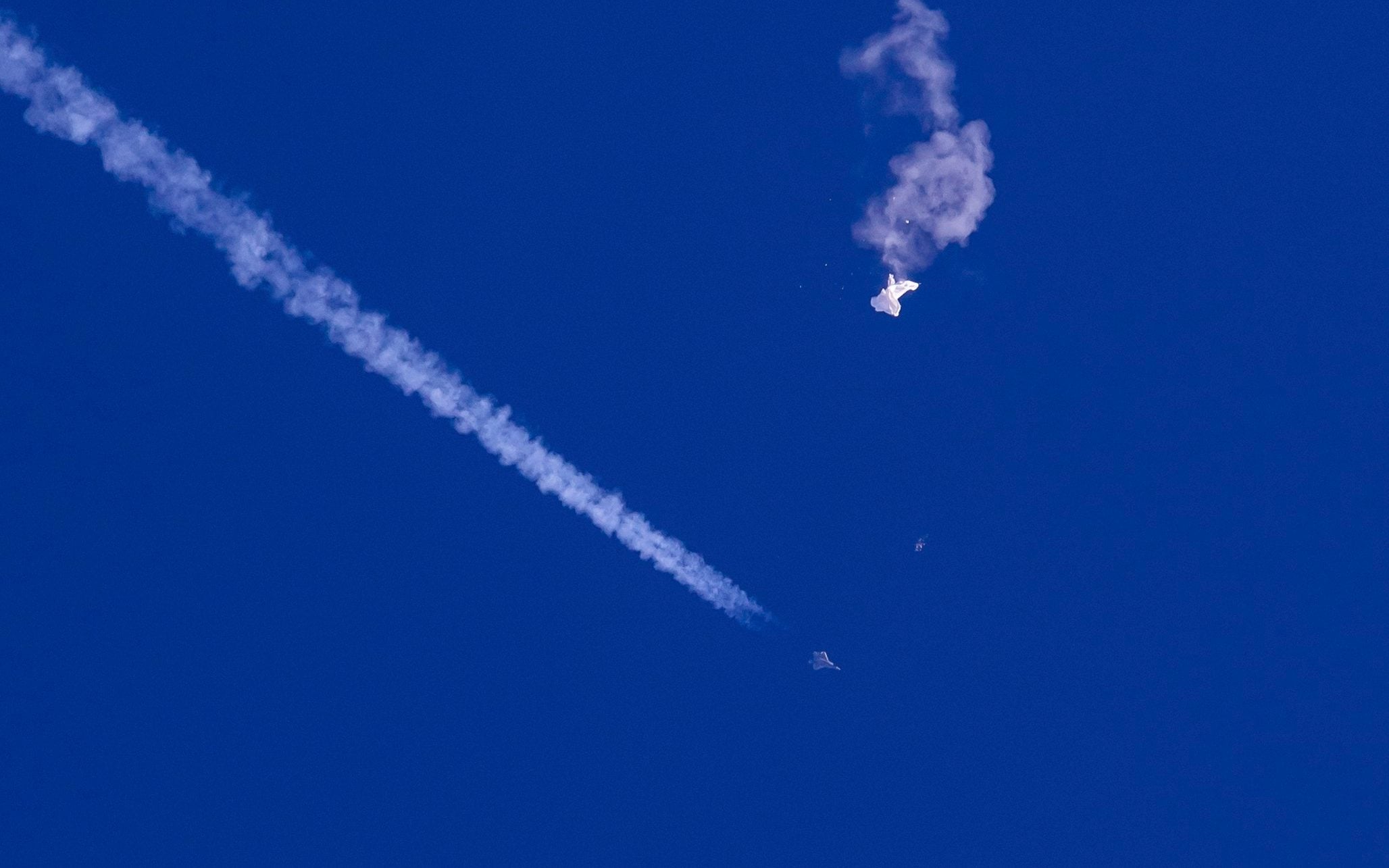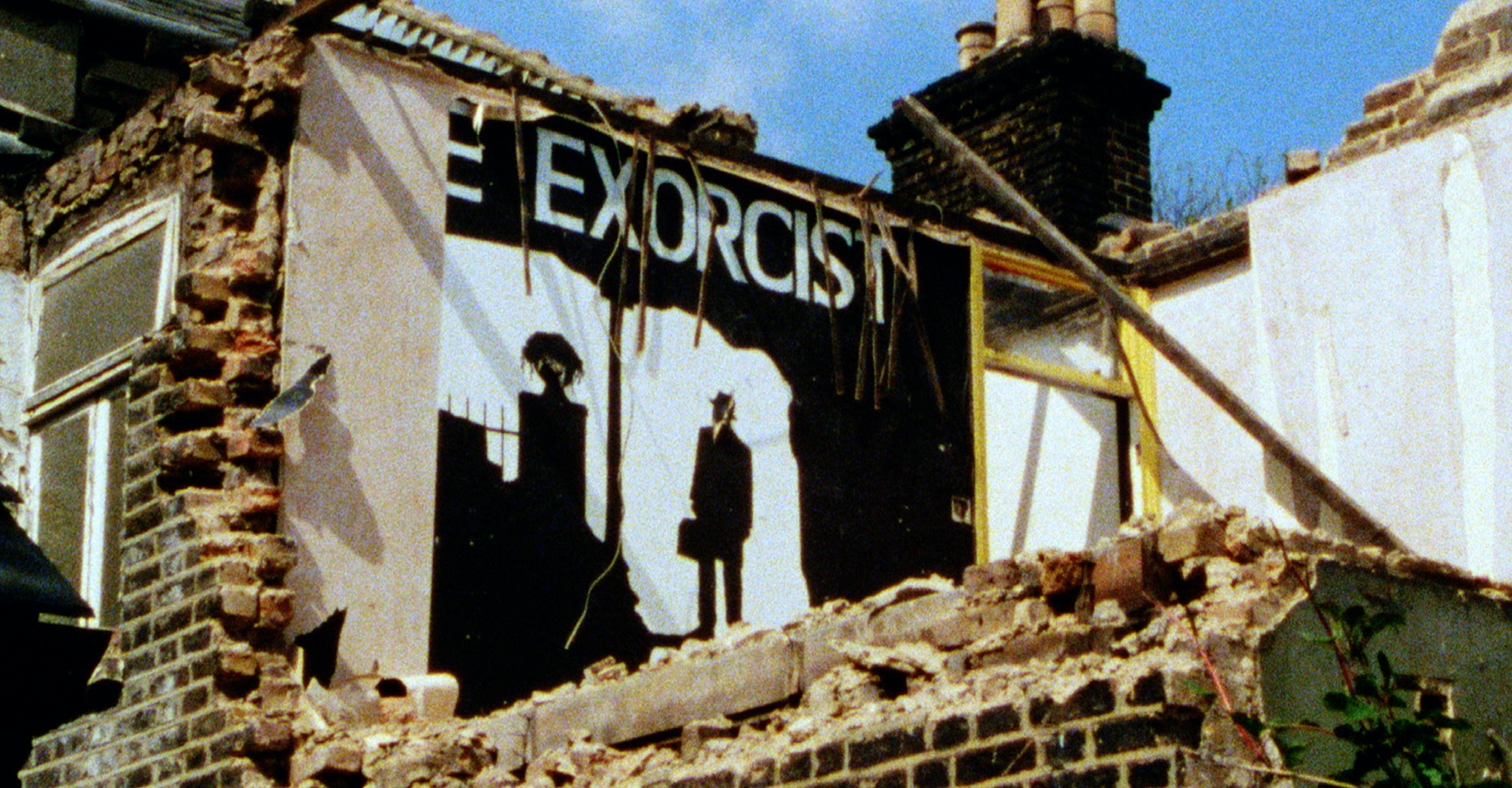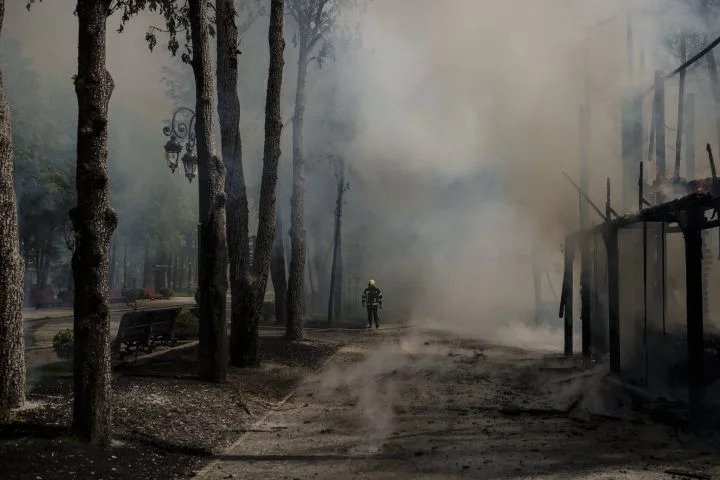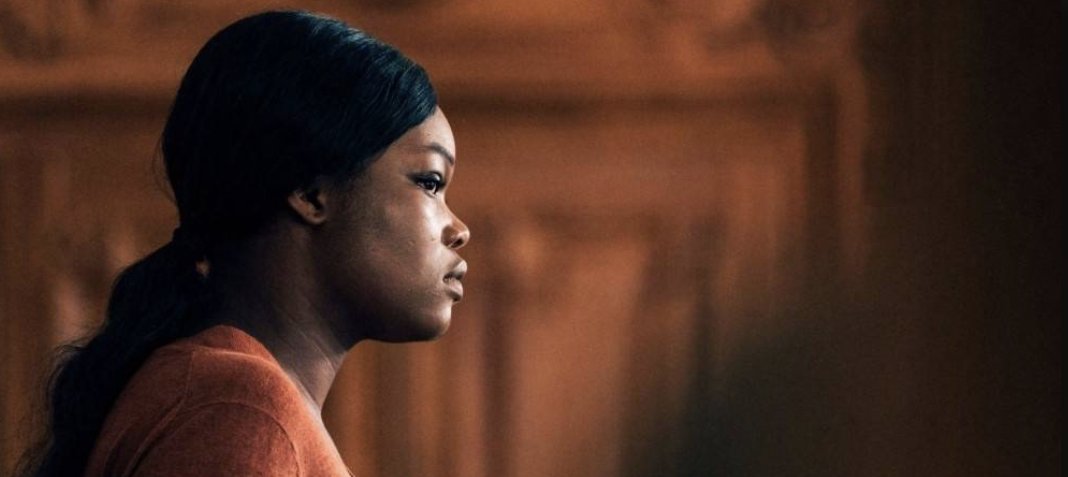According to Hofstadter’s Law, obviously a descendent of Murphy’s Law, ‘everything takes longer than you think’. Last year the first to get acquainted with it in a big way was the Russian warlord, Putin, who of course could have spared himself the shock by following the lead of Trotsky and Mao Zedong and spending some time reading Clausewitz. His Special Military Operation having failed to capture Kiev – planned to be finished in a matter of one or two weeks, putting an end once and for all to Ukraine’s endogenous fascism and exogenous Westernism – Putin had to face the unpleasant prospect of a full-scale war of indefinite duration, not just with Ukraine but also, in one form or other, with the United States.
Less than a year later, a similar insight hit his American counterpart, Biden. A Ukrainian victory nowhere on the horizon, a full barrage of economic sanctions against Russia and Putin’s oligarchic friends had done astonishingly little damage to the Russian capacity to hold on to the Donbass and Crimean Peninsula. The midterm elections of November 2022, in which the Democrats lost their majority in the House, unmistakably served notice that the willingness of the American electorate to fund the Biden-Blinken-Sullivan-Nuland adventure was far from boundless. Indeed, the war of attrition with no end in sight that was taking shape now was increasingly seen as a potential liability in the 2024 Presidential election.
Another Afghanistan-style pullout being out of the question, that of 2021 not yet forgotten even by the notoriously forgetful American public, and Putin having no choice but to hang on or be damned, it is now for the Biden administration to decide how the war will develop. By early March 2023, it seemed that the United States had to choose between two broad alternatives, and fast. Call the first the Chinese Escape. Since Scholz’s one-day visit to Beijing on 4 November, China, and Xi personally, have repeatedly urged that the use of nuclear arms, including tactical ones on the battlefield, must be ruled out under all circumstances. For obvious reasons this concerned Russia more than the US or Ukraine, given the now widely visible deficiencies of Russia’s conventional forces. With a military budget hardly higher than Germany’s – the latter found dismally inadequate from the perspective of Zeitenwende – Russia unlike Germany has to maintain a nuclear capacity, including a strategic intercontinental one, equal to that of the United States. This leaves precious little for its conventional forces. The consequences became evident when the Russian army proved unable to take Kiev, only about 300 kilometers from the Russian-Ukrainian border.
By signalling to Russia, dependent on China as its closest and most powerful ally, that a nuclear response to an American-armed Ukrainian advance would not be appreciated, China did the United States and NATO an important favour, important enough to make it hard to believe that it should have been offered without some quid pro quo. Indications are that in return, the United States had to commit to keeping the military strength of Ukraine at a level where it cannot create a situation that would force Russia to resort to nuclear arms. The result of an understanding like this, if indeed it exists, which it probably does, would essentially be to ‘freeze’ the war: creating a stalemate around the present territorial positions of the two armies that could last for years.
What is more, if the United States were willing, diplomacy of this sort under the aegis of China could advance further. There is not a long way to go from a stalemate to a ceasefire, and perhaps from there to something like a peace settlement, even if it turns out to be a dirty one like in Bosnia and Kosovo. The United States would have to bring along the Ukrainian government, which should not be too difficult given that the US helped to install it in the first place: ‘The Lord giveth and the Lord taketh away; may the name of the Lord be praised.’ From an American perspective, though, an important flaw in this kind of resolution would be that the Chinese, in return for their good services and, in effect, their help with Biden’s reelection, might expect a concession in Asia of the sort that would make it more difficult for Biden to do what he evidently wants to do post-Ukraine: to attack China one way or other, to escape from what has come to be called the ‘Thucydides trap’ in today’s strategic debate in the United States: the position where a sitting hegemon must attack a rising rival early enough to be sure to prevail.
Tempting as the prospect of a way out of the Ukrainian quagmire might be, there are signs that the United States is tilting toward a second, alternative approach, which we may call the Europeanization, and indeed the Germanization, of the war. Remember Vietnamization? While it ultimately didn’t work – in the end it was the United States that was defeated, not its regional substitute, which was never more than a figment of American imagination – it did create some breathing space for the US. It also enabled its propaganda machine to sell to the American public the prospect of an honorable retreat from the battlefield, the battle turned over to a politically reliable and militarily capable bona fide ally. There was no such ally in South East Asia in the 1960s, but in the Europe of the 2020s things may perhaps be different. Unlike Afghanistan, the United States might manage to slowly dissociate itself from the operative business of the war – to preside over rather than conduct it – leaving the material support, the tactical decisions and the delivery of bad news to the Ukrainian government to a local subcomandante who, if things went wrong, could serve as scapegoat and whipping boy.
Who could do the job? Not the European Union, clearly. While its leader, Ursula von der Leyen, had been a defence minister when she moved to Brussels, she was widely considered an incompetent one, and only narrowly escaped a parliamentary investigation into her pitiful performance. More importantly, the EU has no real money, and who in Brussels decides on what with whom is a mystery even for insiders, which typically makes for slow, ambiguous and unaccountable decisions – not useful in a war. Nor can the job be given to the United Kingdom, which by exiting has cut itself off from the law-making machinery of the EU. Also, the UK already serves as a global aide-de-camp for the United States, helping it build a worldwide front against China, potentially the next target of its forever war. Equally out of the question is the famous French-German ‘tandem’, a contraption of which nobody knows for sure whether it is more than a journalistic or diplomatic chimera.
This leaves Germany itself – and indeed looking back one feels that it has for some time been groomed by the United States as its lieutenant commander for the Ukrainian section of the global war for ‘Western Values’. Germanization of the conflict would spare the Biden administration from having to indebt itself to the Chinese for helping it pull out of a war that threatens to become domestically unpopular. Efforts to draft the Germans as European auxiliaries can draw on the legacy of the Second World War, which includes a strong US military presence in Germany, still based in part on legal rights going back to the country’s unconditional surrender of 1945. Right now, there are about 35,000 American troops stationed in Germany, with 25,000 family members and 17,000 civilian employees, more than anywhere else in the world except, it appears, in Okinawa. Dispersed all over the nation, the United States maintains 181 military bases, the largest being Ramstein in Rhineland-Palatinate and Grafenwöhr in Bavaria. Ramstein served as an operational headquarters in the War on Terror – among other things coordinating the shuttle flights for prisoners from all over the world to Guantanamo – and continues to be the command post for American interventions in the Middle East. American bases in Germany host an unknown number of nuclear warheads, some of them for the German air force to drop on US-specified targets using US-certified fighter bombers (under the auspices of what is called ‘nuclear participation’).
There were times in the postwar era when German governments sought to develop a national security policy of their own – like Willy Brandt’s détente, viewed with suspicion by Nixon and Kissinger; Schröder’s refusal, together with Chirac, to join the ‘Coalition of the Willing’ in its abortive search for weapons of mass destruction in Iraq; Merkel’s veto in 2008, alongside Sarkozy, of Ukraine’s admission to NATO; Merkel’s attempt with Hollande, culminating in the Minsk I and II agreements, to broker some sort of settlement between Russia and Ukraine; and Merkel’s stubborn refusal to take seriously the NATO target of a 2%-of-GDP defense budget. By 2022, however, the decline of the Social Democratic Party and the rise of the Greens had weakened German capacity and indeed desire for a modicum of strategic autonomy. This was evidenced two days into the war by Scholz’s Zeitenwende speech in the Bundestag, which if anything was a promise to the United States that insubordination of the Brandt, Schröder and Merkel sort would not happen again.
Scholz may have hoped that the €100 billion special fund (Sondervermögen) set aside to upgrade the Bundeswehr, all debt-financed and therefore invisible in standard fiscal accounts, would assuage any remaining suspicions of German disobedience. Instead, the first year of the war saw a series of tests of the true depth of the German conversion from postwar pacifism to Anglo-American Westernism. When no more than a few weeks after the Zeitenwende speech, sceptical observers noted that the €100 billion had not even begun to be spent, it was not enough for the German government to point out that the new hardware had to be ordered before it could be paid for, and that before it could be ordered it must be chosen. So, to show its good will, Germany hurried to sign a contract for 35 F-35s with the United States government – not, as one might have thought, with its manufacturers, Lockheed Martin and Northrop Grumman. The plane, long an object of desire for the Green foreign minister, is to replace the allegedly outdated Tornado fleet Germany maintains for its ‘nuclear participation’. For an estimated price of $8 billion including repair and maintenance, the planes are promised to be delivered towards the end of the decade, with a unique proviso that the American government may unilaterally adjust the price upwards if it deems expedient.
As it turned out, the F-35 deal got the Germans no more than a short reprieve. While the service branches and lobbyists from Germany and beyond fought over what the rest of the fund would best be spent on, Scholz, to appease American impatience, fired the defense minister, an old SPD party hack who had been appointed against her will to satisfy imagined public demands for gender parity. Shortly before her dismissal, one of her would-be successors, serving as Bundeswehr ombudswoman, demanded that the €100 billion be increased to €300 billion. A few days later the job went to someone else, Boris Pistorius, up to then interior minister of the state of Lower Saxony, a man also lacking military experience but radiating something like all-round managerial competence. One of the first things he did was resolve an until then carefully cultivated ambiguity in the Zeitenwende speech, which was whether the €100 billion would bring the regular defence budget up to the NATO-sanctioned 2%, or whether it was to be in addition to the 2%, like a fine for past negligence. According to Pistorius it was the latter, so regular defence spending would have to grow by €10 billion every year, for several years, above and beyond whatever was spent of the Sondervermögen. Moreover, when the general secretary of NATO, Jens Stoltenberg, about to become head of the Norwegian central bank – a sinecure if there ever was one – let it be known that 2% was from now on just the minimum, Pistorius was among the first to agree.
Meanwhile, in September 2022, the next test, again a tough one, was the destruction of the Nord Stream 1 and 2 pipelines by, according to Seymour Hersh, an American-Norwegian hit squad. Here the task for the German government was to pretend they had no idea who had done it, to keep silent on the matter, and to get the press either to do the same or tell the public that ‘Putin’ was the culprit. This test was brilliantly passed. A few weeks after the event, when a Bundestag member – alone out of 709 MPs – asked the government what it knew, he was told that for reasons of Staatswohl – the well-being of the state – no such questions would be answered: not now, not in future. (The day after Hersh had made his findings public, the Frankfurter Allgemeine reported on it under the heading, ‘Kreml: USA haben Pipelines beschädigt’ (Kremlin: US damaged Pipelines).
Yet another loyalty test, this one more protracted and cumulative, conducted in parallel with the battle of the budget, concerned the delivery of arms and ammunition to the Ukrainian army. Ukraine had since 2014 been the one industrialized country with by far the highest yearly increase in defence spending, paid for not by its oligarchs but by the United States, in pursuit of so-called ‘interoperability’ between the Ukrainian army and NATO (officially declared to have been achieved in 2020). While this may have been a cause for concern among Russian generals – who were surely aware of the dereliction of their conventional forces subsequent to Putin’s decision to keep up with the modernization of the American nuclear forces – from the first day of the Russian attack NATO states were asked to send arms to Ukraine, increasingly powerful ones and in growing numbers. As it became obvious that Ukraine would be unable to hold its own without a steady inflow of material support from a revived West, the US insisted that European countries carry a growing share of the burden, particularly those guilty of having neglected their military, above all Germany.
It soon transpired, however, that national armies were less than enthusiastic about having to surrender some of their most precious and prestigious equipment to Ukraine, claiming that this would diminish their capacity to defend their own countries. Underlying their reluctance may have been a fear that what they gave to the Ukrainians might fall into the hands of the enemy, be damaged beyond repair on the battlefield or sold on the international black market, with no hope of reimbursement even for equipment formally just on loan. Another worry concerned prospects for rearmament once the war was over and Ukraine had to be rebuilt – better than ever – by ‘Europe’, as untiringly promised by Brussels. There were also worries, typically expressed in public by retired high-ranking military officers, about European countries being drawn into a war the conduct and aims of which their governments, as demanded by the United States and public opinion, had left to the Ukrainians to determine. Not least, there seems to be a concern that if the war came to an abrupt end, Ukraine would have the biggest and best-equipped ground forces in Europe.
Again it was Germany, by far the largest West European country, that more than all others had to prove, under the watchful eyes of the United States and the international media, its readiness to ‘stand with Ukraine’. At first, the then German defence minister had offered 5,000 helmets and bullet-proof vests for the Ukrainian military, which was widely ridiculed by the country’s allies and, increasingly, its public. In subsequent months ever more powerful weaponry was demanded and supplied, including air defence missiles like the Iris-T system that has not even reached the German troops, and the mighty Tank Howitzer (Panzerhaubitze) 2000. Each time the Scholz government drew a red line, it was forced to cross it under pressure from its allies as well as the two smaller coalition partners, the Greens and the Liberals – the former controlling the foreign ministry, the latter the Bundestag defence committee, chaired by an FDP deputy from Düsseldorf, home of Rheinmetall, one the biggest arms producers in Europe and beyond.
In the winter of 2022 the debate on arming Ukraine began to focus on tanks. Here in particular, Germany had to be pushed step-by-step toward ever more powerful models, from armoured personnel carriers to that famous battle tank, Leopard 2, a global export success built by a consortium led by, well, Rheinmetall. (Around 3,600 such Leopards of the most advanced 2A5-plus product line have been sold all over the world, to such enthusiastic supporters of Western values as Saudi Arabia, to assist them in their tireless effort to bring peace to Yemen.) Partly because German tanks figure prominently in Russian historical memory, but also because there were no signs that Germany would have a say on what its tanks would be used for (it is no more than 500 kilometers from the Ukrainian border to Moscow), Scholz at first, as usual, offered one reason after another why, unfortunately, no Leopards 2 could be supplied. In response, some of Germany’s allies, in particular Poland, the Netherlands and Portugal, let it be known that they were willing to donate their Leopards, even if Germany wasn’t. Poland even announced that they would send Leopards to Ukraine, if need be, without a German license – a legal requirement under German arms export policy.
The way this story played out may have been of formative importance for the future course of events. Cornered by its European allies, Germany no longer objected to sending Leopards to Ukraine, provided the United States also agreed to supply their main battle tank, the M1 Abrams (another worldwide export hit, with a total production up to now of 9,000 pieces). As a ‘first step’, Germany promised to provide 14 of its 320 Leopards, forming a tank regiment to be handed over to Ukraine within three months. From there, it would proceed to build two tank battalions, with 44 Leopard 2 tanks each, out of its own Leopards and those expected from its European partners – training, spare parts and ammunition included – to be turned over battle-ready to the Ukrainian army. (According to expert estimates, Ukraine would require about 100 Leopards of the latest model for a significant improvement of its military capacity.)
At this point, however, around the time of the Munich Security Conference, two unpleasant surprises ensued. First, it turned out that Germany’s European allies, now that German resistance had been overcome, discovered all sorts of reasons why they had to hold on to their Leopards, export licenses or none, leaving the provision of battle tanks essentially to the Germans. (All in all, NATO armed forces command an estimated total of about 2,100 Leopards, of both the 1 and 2 models.) Second, American investigative reporting, particularly in the Wall Street Journal, revealed that the Abrams tanks would show up on the scene only in a few years’ time if at all, something that the German negotiators seemed to have overlooked, or had been asked to overlook by their American counterparts, and had certainly not been shared with the German public.
In the end, then, the Scholz government was left holding the bag – as practically the sole supplier of battle tanks to Kiev. What made this even more uncomfortable was that precisely on the day the Germans agreed to the Leopards deal, the Ukrainian government declared that, now that this had been achieved, the next items on its wish list would be fighter planes, submarines and battleships, without which there was no hope for Ukraine to win the war. (Ukraine’s former ambassador to Germany, one Andrej Melnyk, having moved back to Kiev where he now serves as deputy foreign minister, tweeted on January 24, in English: ‘Hallelujah! Jesus Christ! And now, dear allies, let’s establish a powerful fighter jet coalition for Ukraine with F-16 & F-35, Eurofighter & Tornado, Rafale & Gripen jets & everything you can deliver to save Ukraine!’) Topping this, at the Munich security conference the Ukrainian delegation asked the US and the UK for cluster bombs and phosphorous bombs, outlawed under international law but, as the Ukrainians pointed out, held in large numbers by their Western allies. (The FAZ, always eager not to confuse its readers, in its report called cluster bombs umstritten – ‘controversial’ – rather than illegal.)
For the German governing coalition, but also the Biden administration, a crucial question with respect to the assignment of a leading role to Germany is whether the country’s postwar pacifism is still strong enough to interfere with it. The answer is that it may not be. Not unlike in the United States, the abolition of the draft seems to have made it easier to consider war an appropriate means in the service of the good: unlike in Ukraine, German sons, boyfriends, husbands are not at risk of having to go to the battlefield. Among large parts of the younger generation, moral idealism covers up the crude materialism of killing and dying. Within and around the Green party, something like a new taste for heroism has emerged, among what was until a short time ago considered a post-heroic generation. No parents, indeed no grandparents are around anymore who can offer firsthand accounts of life and death in the trenches. Dreams have arisen of a sanitized warfare, executed strictly according to the Hague Convention, at least on our side – no longer a matter of war and peace but one of crime and punishment, with the ultimate aim, at the cost of hundreds of thousands of human lives, of Putin having to stand trial in a court of law.
There may also be specifically German factors at work. Within the Green generation, nationalism as a source of social integration has effectively been replaced, more than anywhere else in Europe, by a pervasive Manicheanism that divides the world into two camps, good and evil. There is an urgent need to understand this shift in the German Zeitgeist, which seems to have evolved gradually and largely unnoticed. It implies that, unlike in a world of nations, there can be no peace based on a balance of power and interests, only a relentless struggle against the forces of evil, which are essentially the same internationally and domestically. Clearly this bears some resemblance to an American conception of politics, shared by neocons and Democratic idealists alike, and embodied by someone like Hillary Clinton. The syndrome seems to be particularly strong on the left side of the German political spectrum, which would in the past have been the natural base of an anti-war and pro-peace, or at least pro-ceasefire, movement. Now, however, not even Die Linke would endorse the peace demonstration organized on 25 February by Sahra Wagenknecht and Alice Schwarzer, Germany’s feminist icon, at the risk of breaking the party apart and ceasing to be a political force.
Moreover, postwar Germans have long tended to listen with sympathy to non-Germans attributing to them collective moral deficiencies and demanding humility in one form or another. It is hard to think how else to account for the extraordinary popularity enjoyed by the above-mentioned Ukrainian ambassador to Germany, Melnyk, an unashamed fan of the terrorist, Nazi collaborator and war criminal Stepan Bandera and of his co-leader of the Ukrainian nationalists in the interwar years and under German occupation, also named Andrej Melnyk. Via Twitter, Melnyk has relentlessly lambasted German political figures, from the federal president, Frank-Walter Steinmeier, downwards, for not standing sufficiently with Ukraine, in language that in all other countries would have led to his accreditation being revoked. There was hardly a week when Melnyk was not invited onto one of the weekly television talk shows to accuse German political leaders of genocidal conspiracy with Russia against the Ukrainian people. Named deputy foreign minister in the fall of 2022, Melnyk continued to figure prominently in the German debate on the country’s obligations toward Ukraine. For example, referring to an article in Süddeutsche Zeitung in which Jürgen Habermas advocated a cease-fire in Ukraine to enable peace negotiations, Melnyk tweeted: ‘That Jürgen Habermas is also so brazenly in Putin’s service leaves me speechless. A disgrace for German philosophy. Immanuel Kant and Georg Friedrich Hegel would turn in their graves out of shame.’ (To gauge the tone of much of the discussion, see a tweet from a young aspiring comedian, one Sebastian Bielendorfer: ‘Sahra Wagenknecht is simply the empty shell of a completely mentally and humanly depraved cell cluster. She shouldn’t be invited on talk shows, she should be treated.’ A day later: ‘Twitter has deleted the tweet. Regrettable. The truth remains.’)
Taking everything together, there seems to be a concerted attempt by the United States and NATO to drag Germany into the war, in an increasingly prominent and active capacity. Over the past year, other European countries have learned how to nudge Germany onward so they themselves can remain on the sidelines (the Netherlands) or pursue their interests with a greater prospect of success (Poland and the Baltic states). Germany, in turn, tired of being nudged forward by others, may be more inclined to nudge itself. Already last year, Social Democratic leaders, including the new party chair, Lars Klingbeil, talked about Germany’s need to lead Europe and their willingness to do so. Importantly, France was no longer mentioned in this context. Having pretended for too long not to be involved, a more self-confident Germany may now treat it as exactly that.
A possible role into which Germany may be growing could be that of a privileged political and military subcontractor of the United States, having been sufficiently humiliated publicly in the Nord Stream and Leopard 2 episodes to understand that to avoid being pushed around by the US, Germany must be ready to lead Europe on its behalf, receiving orders from Washington through Brussels, Brussels being not the EU but NATO, the emerging line of command visualized by the seating order at the Ramstein conferences, with the United States, Ukraine and Germany at the head of the table. In this evolving capacity, Germany would be charged with both scraping together and paying for whatever arms the Ukrainian forces may feel they need for their final victory – at the risk, should that victory fail to materialize, of being found guilty, in lieu of the United States, of incompetence, cowardice, stinginess and, of course, sympathy with the enemy.
As time passes, indirect German participation in the war could become more and more direct: a slippery slope, like its role as arms supplier. Considerable numbers of Ukrainian troops are already being trained in Germany, on American but increasingly also on Bundeswehr bases, and not a few Germans, mostly right-wing radicals, are fighting in international legions with the Ukrainian army. Very soon, the Leopards that have been deployed will need to be serviced and repaired, which may require sending them back to Germany. Rheinmetall has announced that they will set up a plant in Ukraine to build about 400 Leopards a year, obviously on the assumption that the war will last long enough for the Ukrainian-produced tanks to come on stream, and for the plant to be profitable. As a matter of course, the factory will have to be protected by air defenses – best operated, one imagines, by experienced German teams. As for the fighter planes, they would most safely be stationed away from the battlefield, perhaps somewhere in the Rhineland where the facilities necessary for their maintenance already exist. Specialists in international law will debate whether backstage support like this does or does not make a country a combatant; ultimately it will be the Chinese, not a court of law, who will decide what actions Russia can take in response.
Scholz’s surprise visit to Washington on 4 March – no information was made available by either side on what was talked about in an 80-minute conversation with Biden – may have involved Scholz being read the riot act, Biden explaining to him in no uncertain terms what being a reliable ally of the West will mean for Germany, politically, materially and militarily. It may also have involved the delivery of the ‘narrative’ that the American secret services have concocted to counter the Hersh report: telling the Germans that this was to be the official preliminary result of their own investigation, thereby subjecting them to another credo quia absurdum test of how much they will put up with for the sake of Western unity. Remarkably, the story Washington is spreading refers to a ‘pro-Ukrainian group’ supposedly responsible for the attack, though it has not been made clear whether they are connected to the Ukrainian state, leaving open the possibility that they might be.
Quite possibly, Biden and Scholz may also have discussed what to do when the wisdom of all military experts, trivial enough, can no longer be kept secret: that a ground war can ultimately be won only on the ground. At this point, the question will have to be addressed of how to replace the many dead, wounded or missing-in-action Ukrainian soldiers. Might this possibly be the hour of a ‘European army’, trained by the Bundeswehr and equipped at German expense with quality products from Rheinmetall and others? Volunteers might be recruited from Eastern European countries or among would-be immigrants from elsewhere, with European citizenship available after service, along the lines of the first European army, the multinational Roman legions. Commanders on the battlefield, indispensable even in an age of artificial intelligence, could then have two passports, one of them Ukrainian or ‘European’. Other ways could be found to involve Germany in the war, short of a return to compulsory military service; as the Ukrainians, according to von der Leyen, are freely giving their lives for our ‘values’, there would be no need for Germany to reinstate the draft at the risk of forfieting popular support. Although one never knows.
There is, however, another path that could be taken with Germany as European franchisee of the United States. Indications are that the unending demands of the Ukrainian government for more and more arms have led to disenchantment on the part of the Americans with their Ukrainian ally, especially as the willingness of Congress to continue to fund the war is declining. Looming in the background may also be the memory of Zelensky’s public demand for nuclear retaliation by the US for an allegedly Russian missile landing on Polish soil, one that later turned out to have been a misdirected Ukrainian missile. Add to this the public request for cluster bombs in the moment of exuberance over the Leopard 2 success. Seen from this perspective, the American secret-service fabrication of an alternative account of the destruction of the Nord Stream pipelines could well be read as a warning signal to the Kiev government.
By withdrawing from the operational conduct of the Ukrainian war and contracting it out to Germany, the United States might spare itself the embarrassment of having to inform Kiev that Western support for its more ambitious war aims is not unlimited. Germany, for its part, may try to do what agents sometimes do if their principal cannot control everything they are doing supposedly on its behalf. Having assumed European leadership as demanded by the United States, Germany may find itself in a position to push back against Ukrainian attempts to draw it deeper into the war. Perhaps it may aim for more than a mere freezing of the conflict, at something like a settlement along Minsk II lines. By helping the United States liquidate part of its position in Ukraine, it could end up rekindling a beautiful friendship.
Whether Germany will in fact be able to do this will depend in part on whether it can temper the new enthusiasm for war that has taken hold in the German public, especially its Greenish section. Baerbock and her followers denounce as treason and disregard of Ukrainian ‘agency’ anything short of what it takes for a regime change in Moscow. The spirits invoked to bring about Zeitenwende may not easily go away when commanded to do so. The rhetoric of the first year of the war may have foreclosed any peacemaking outside of total victory for the time being, making it impossible to end the slaughter on short order, even after the United States has lost interest. There is also the fact that the demolition of the pipeline has, probably intentionally, deprived Germany of the ability to offer to Russia a resumption of gas delivery in return for its participation in something like a peace process, optimally one with a roadmap attached – not to mention the full salvo of economic sanctions directed, de facto, by the United States.
During the Boxer Rebellion in 1900, the European Expeditionary Corps led by Sir Edward Hobart Seymour, Admiral of the Royal Navy, was on its way from Tientsin to Beijing. Close to its destination it met with fierce Chinese resistance. At the moment of greatest need, Admiral Seymour issued to the commander of the German contingent, Kapitän zur See von Usedom, the order, ‘The Germans to the front!’ German military tradition views the episode with pride, as a moment of supreme international recognition for its prowess. History sometimes repeats itself.
Read on: Susan Watkins, ‘An Avoidable War?’, NLR 133/134.
